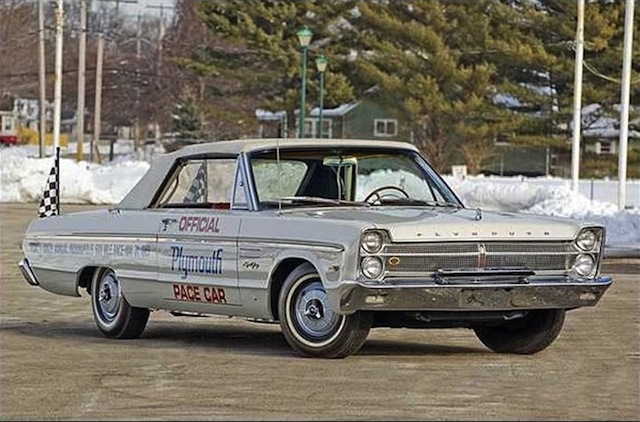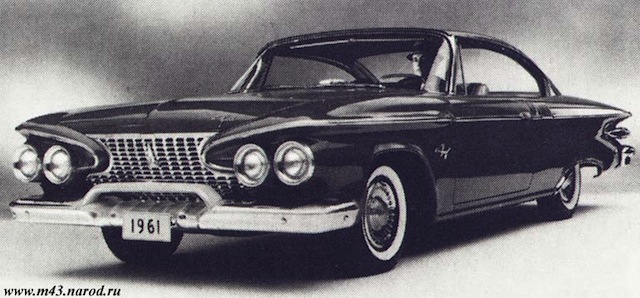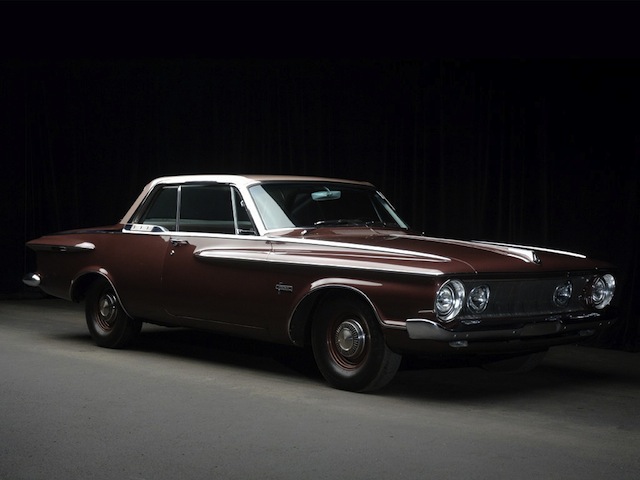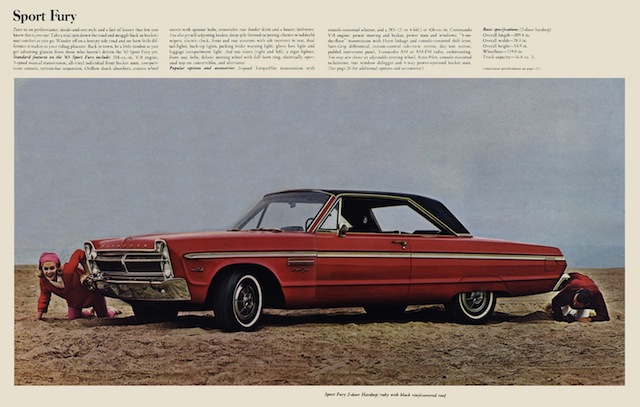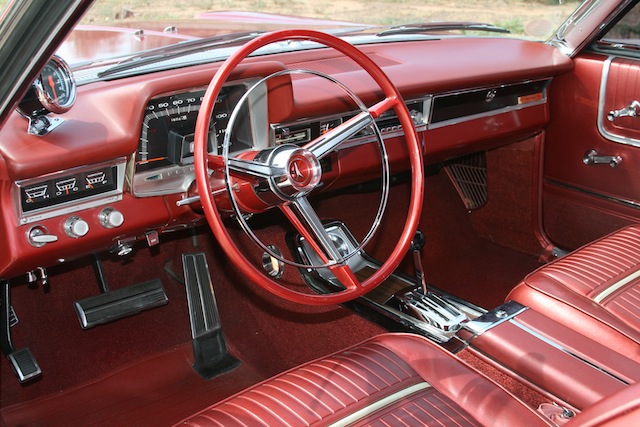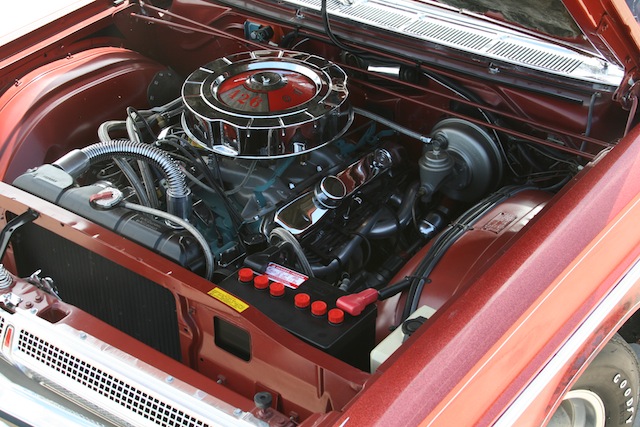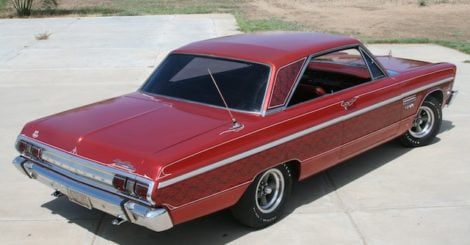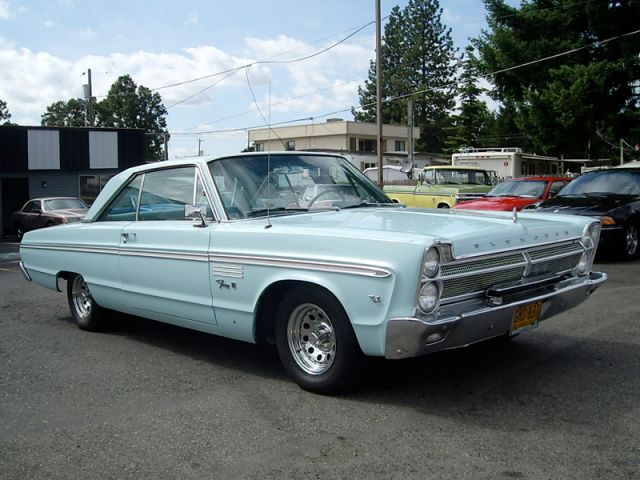 There once was a time when the Chrysler Corporation was number two in sales, ahead of the formerly #1 Ford brand. However, a number of business miscalculations have forced the Chrysler to be on the brink of disaster numerous times in its history. One of Chrysler’s biggest boners was during the dawn of the muscle car era.
There once was a time when the Chrysler Corporation was number two in sales, ahead of the formerly #1 Ford brand. However, a number of business miscalculations have forced the Chrysler to be on the brink of disaster numerous times in its history. One of Chrysler’s biggest boners was during the dawn of the muscle car era.
But with some clever platform reshuffling for 1965 and the introduction of the new full-size C-body, the Chrysler Corporation was back in the saddle. And with the addition of the Commando 426 for the Plymouth Fury, Chrysler had its first “proper” full-size muscle car.
Chrysler Corporation’s trend of business gaffes started in 1949 when the company’s post-war redesigns did little to support the enthusiasm of a public hungry for fresh, new cars. This was due to President K.T. Keller’s insistence that drivers and passengers should be able to wear a hat inside; in contrast, the rest of the industry were producing sleek vehicles that – in GM’s case – had high compression motors and automatic transmissions. Chrysler’s response was the 331 HEMI in 1951, but an automatic transmission and snazzy styling would have to wait. The waiting was over with the debut of Virgil Exner’s 1955 creations and, by 1957, his “Forward Look” stole GM’s position as THE style leader.
However, unexpected demand led to poorly built cars that hurt Chrysler Corporation’s reputation, something that took years to recover (the advent of the 5/50 warranty in 1963 was a response to this). Some of Chrysler Corp’s 1960 offerings were awkward enough to make people wish it was 1957 all over again, and then the oddly designed 1961 models were final confirmation that the company was out to lunch. Certainly 1962 would be a better year, right?
Maybe not. Legend has it that a Chrysler executive overheard a Chevrolet executive at a party talk about downsizing their car line. With competition being what it is, the Chrysler executive demanded the upcoming 1962 Plymouth and Dodge models be reduced in size; unbeknownst to him, the party conversation was about Chevrolet’s upcoming Chevy II compact. Virgil Exner’s designs were practically locked-up at that point, but a crash course was undertaken to downsize the 1962 Plymouth and Dodge lines. This compromised the original intentions of Exner’s designs, resulting in goofy styling, and a wheelbase three inches shorter and length at least seven inches shorter than the competition’s.
The truth was that these cars made more efficient use of their size, as their trim proportions were not done at the expense of interior volume or performance. The latter was especially true for the Max Wedge 413, but racing success couldn’t make up for the styling or Americans’ perception that size mattered. It certainly didn’t help that FoMoCo introduced America’s first “intermediate” cars, the 1962 Ford Fairlane and Mercury Meteor. Wheelbase was less than an inch shorter than the Mopars, although length was almost five inches shorter. More than 386,000 were built, compared to less than 173,000 full-size Plymouths and even fewer full-size Dodges, but Dodge was lucky enough to have the Custom 880 join the lineup. This mid-year quick fix was basically a Chrysler body with a 1961 Dodge front end, all on a 122-inch wheelbase. Sales rebounded for 1963 with more conventional styling, added length and, for Dodge, an increase of three inches in wheelbase. Nineteen sixty-four continued the marginal improvements with even more mainstreamed styling.
But 1965 would be the most significant moment for the Chrysler Corporation in years. The corporation shuffled its 1964 full-size offerings and moved them into the burgeoning intermediate class (Belvedere I, II, and Satellite). On Plymouth’s end, the full-size void was filled by the brand-new Fury series. With a “proper” 119-inch wheelbase (121 for wagons) and at over 209 inches in length, this was the car that they needed in 1962. Design and styling was utterly conventional, as former Ford design honcho Elwood Engel’s pen was used with restraint. Combined with the 5/50 warranty and success of the second-gen Valiant, the Plymouth brand was not the compromised marque that it had been a few years earlier.
Trim levels started with the Fury I, which was available as a two-door or four-door sedan plus a wagon and came standard with the Slant Six or “Polysphere” 318 with column-mounted three-speed manual transmission, color-keyed deep-pile carpeting, single-speed windshield wipers, heater, front and rear armrests, and not much else. But the Fury I was still a Plymouth, which meant it received the roadable benefits of Torsion-Aire suspension that gave it the poise that often was missing from its cross-town competitors.
Moving up to the Fury II gave you the same body style choices but with a longer list of standard equipment including a deep foam front seat cushion and a bit more exterior brightwork. The less austere Fury III was also was available as a four-door sedan and wagon plus a four-door hardtop, two-door hardtop, and convertible; moving into this class Fury gave you full-length aluminum body side molding, dual taillights with back-up lights, parking brake warning light, electric clock, and illumination for the glove box and trunk.
Top of the Fury line was the Sport Fury. “Sport” in its name didn’t mean horsepower but, rather, it was the sporty pretensions of bucket seats and console, standard 318 V-8, custom wheel covers with spinners, removable rear fender skirts, deluxe steering wheel, and engine-turned inserts for the side body molding. All Furys received unibody construction, rust-resistant body, buffable acrylic enamel paint, servo-contact self-adjusting brakes, and an alternator.
None of that sounds like muscle car material, right? But, remember, this was 1965 – the Pontiac GTO came out just the year before, and many companies had yet to introduce a dedicated performance model. Even though the market was headed towards intermediate cars like Plymouth’s own Belvedere/Satellite (which, of course, was formerly known as a Savoy/Belvedere/Fury/Sport Fury from 1962-64), there still were performance options for the big 1965 Fury.
Things started to get interesting with the Commando 383. With a forged steel crankshaft, large-diameter valves, stamped steel rocker arms and hydraulic tappets, special high-performance camshaft, dual breaker distributor, unsilenced low-restriction air cleaner, and dual exhausts, it put out 330 horses and 425 lb.-ft. of torque on 10.0 to 1 compression. Car Life magazine was “much-taken with the easy strength and flexibility of the 4-barrell Commando 383 engine,” but a driver would be hard-pressed to achieve the quarter mile better than the high-15s.
For the performance enthusiast who desired to better compete with 409 Chevys and 427 Fords, the Commando 426 satisfied those pangs. Plymouth claimed, “This is the high-performance street version of the biggest engine Plymouth offers . . . [it] is tuned for smooth, around-town driving . . . and it doesn’t require the special fuels and extra servicing needed by competition-tuned engines.” Commonly known as the 426 Street Wedge, it was introduced the year before, placed just below the Max Wedge 426 and its HEMI successor.
The Commando 426 came with a high-performance camshaft, valve springs, pistons and spark plugs, hydraulic tappets, dual breaker distributor, unsilenced air cleaner, viscous-drive engine fan, heavy-duty 10.5-inch clutch, plus heavy-duty torsion bars and front anti-sway bar. With 10.3 to 1 compression, the Commando 426 made 365 horsepower and a massive 470 lb.-ft. of torque. (Imagine it as a precursor to 1967’s Super Commando 440 and you wouldn’t be far off.) As equipped in the Fury, hitting the 14s would have been possible; installed in a lowly Fury I two-door sedan, it made for a very fast, unusual, and rare machine.
This 1965 Sport Fury still has its c.1970 metalflake paint job.
However, it’s likely that most of the Commando 426s were installed in high-zoot Sport Furys like this one owned by Dennis and Laura Kerry. Dennis’ father ordered the Ruby Sport Fury from Johnny Motors in Hamtramck, Michigan, one chilly September morning in 1965. Father and son had their fun with the Plymouth, adding American Racing Torq-Thrust wheels, mildly modifying the motor with a cam and wheel-well headers, and 4.56 gears for a 12.84 ET in D/Stock Automatic.
Dennis eventually ordered a Dark Red metallic 1967 GTX, while Dad had the mighty Mopar repainted with this custom metal flake paint job in 1970. After 10 years of storage, Dad passed on in 1984, so the Plymouth made its way to Dennis and Laura’s digs in Scottsdale, AZ. Today, the rare Plymouth has a touch over 18,000 miles and keeps company with several 1967 GTXs. Perhaps not usually mentioned in the same breath as the GTX, the 1965 Fury with the Commando 426 is the missing link in the evolution of Mopar Muscle, from the racing Max Wedge and HEMI cars of 1962-64 to the Street HEMI B-bodies of 1966.



